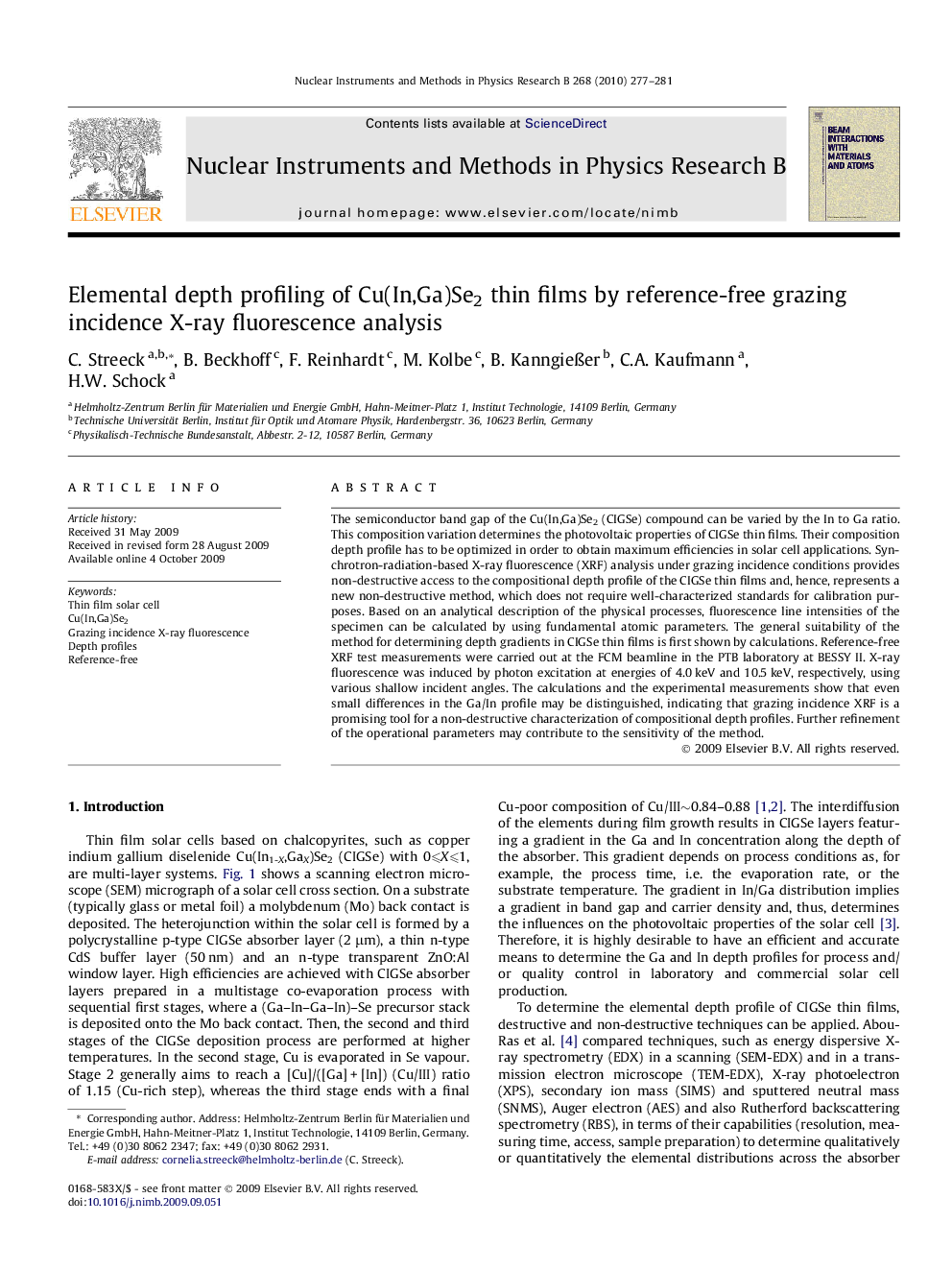| Article ID | Journal | Published Year | Pages | File Type |
|---|---|---|---|---|
| 1683740 | Nuclear Instruments and Methods in Physics Research Section B: Beam Interactions with Materials and Atoms | 2010 | 5 Pages |
The semiconductor band gap of the Cu(In,Ga)Se2 (CIGSe) compound can be varied by the In to Ga ratio. This composition variation determines the photovoltaic properties of CIGSe thin films. Their composition depth profile has to be optimized in order to obtain maximum efficiencies in solar cell applications. Synchrotron-radiation-based X-ray fluorescence (XRF) analysis under grazing incidence conditions provides non-destructive access to the compositional depth profile of the CIGSe thin films and, hence, represents a new non-destructive method, which does not require well-characterized standards for calibration purposes. Based on an analytical description of the physical processes, fluorescence line intensities of the specimen can be calculated by using fundamental atomic parameters. The general suitability of the method for determining depth gradients in CIGSe thin films is first shown by calculations. Reference-free XRF test measurements were carried out at the FCM beamline in the PTB laboratory at BESSY II. X-ray fluorescence was induced by photon excitation at energies of 4.0 keV and 10.5 keV, respectively, using various shallow incident angles. The calculations and the experimental measurements show that even small differences in the Ga/In profile may be distinguished, indicating that grazing incidence XRF is a promising tool for a non-destructive characterization of compositional depth profiles. Further refinement of the operational parameters may contribute to the sensitivity of the method.
